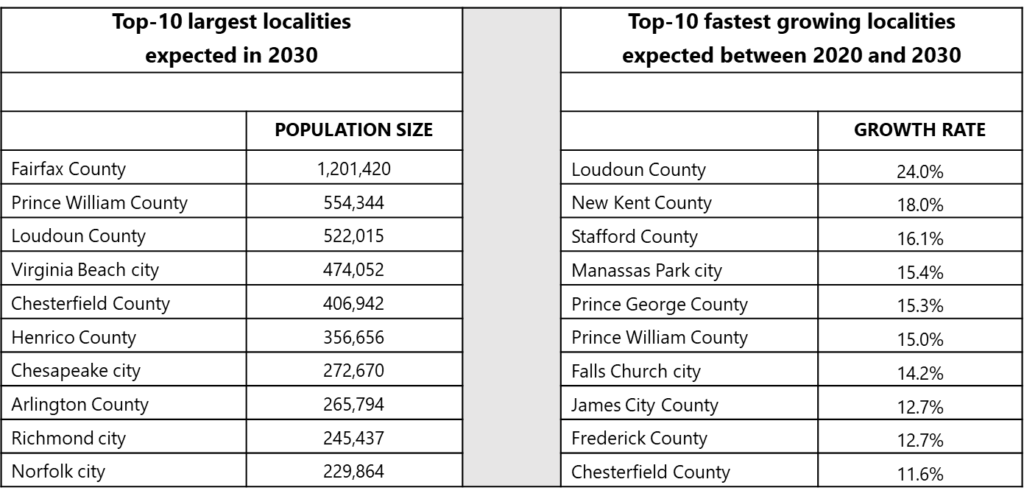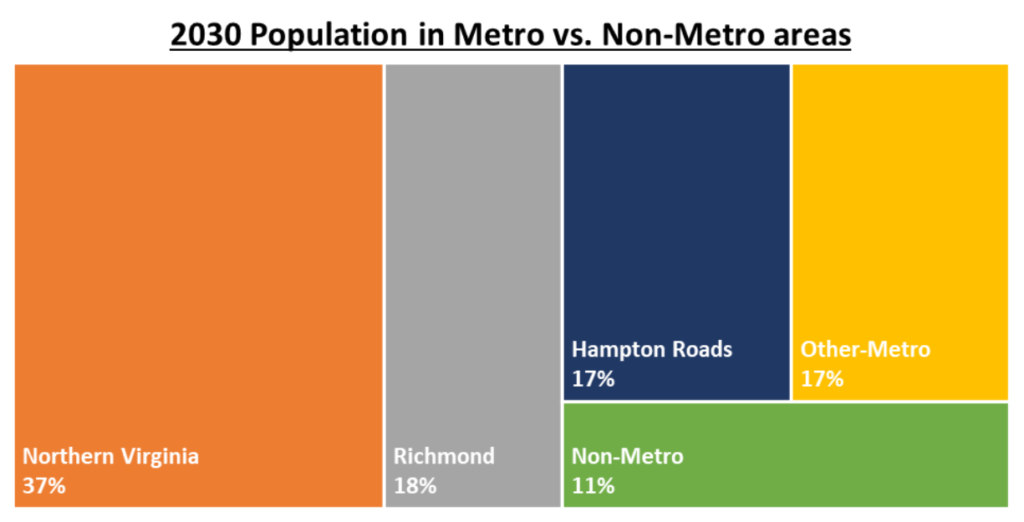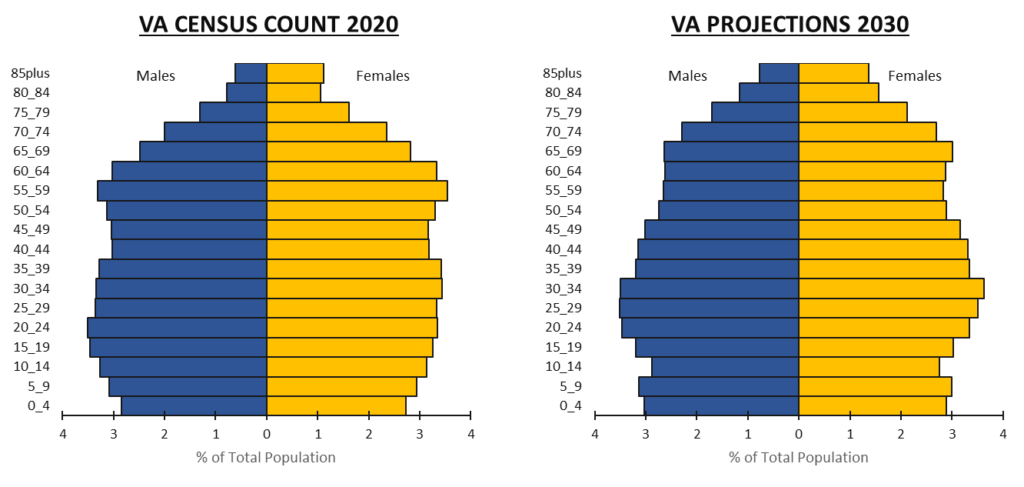New Virginia Population Projections for 2030-2050
Since the release of the 2020 Decennial Census, the Weldon Cooper Center Demographics Research Group has been actively using this new data to evaluate our past projections; to modify our modelling techniques and methodology in order to minimize the potential accuracy issues of the new Census data; and to develop the official 2030, 2040, and 2050 projected populations (total, age, sex) for each of Virginia’s 133 cities and counties.

Findings from the latest round of Virginia population projections suggest that the Commonwealth is expected to add almost 500,000 residents since the 2020 Census, reaching 9.1 million by 2030. While Virginia continues to grow steadily in terms of absolute population size, the rate of population growth is expected to drop from 7.9% in the last decade, to 5.8% over 2020-2030.
Historically, the statewide growth rate has fluctuated over the decades, and this slower pace of growth is not unanticipated, given the nature of the current demographic trends of lower births, higher deaths, and fewer people moving in.

Given Virginia’s large number of counties and county-equivalent cities—with recent population counts ranging from 1,150,309 in Fairfax County to 2,232 people in Highland—and diverse regional trends, growth patterns across the Commonwealth are far from uniform. The prominent rural-urban divide is expected to continue in this decade, with over 70% of Virginians being in the 3-largest metropolitan areas and just 11% of the populace living in rural communities. The future regional population shares show that Northern Virginia will be home to well over a third of the state’s residents (37% share or 3.4 million people), followed by the Richmond (18% or 1.64 million) and Hampton Roads (17% or 1.59 million) regions. This is also demonstrated by the rates of population change over the decade of 2020-2030, with Northern Virginia projected to grow by 11% while the non-metro areas are expected to shrink by 5%.

The latest projections also highlight the shifting age composition in Virginia, with the statewide share of the older adult population (those aged 65 and above) showing continued growth from 12% in 2010, to 16% in 2020, to 19% in 2030 and beyond.
By 2030, 1 in 5 Virginians will be over age 65; and a number of rural localities such as Lancaster County, Highland County, Northumberland County, Middlesex County, Mathews County, Northampton County, and Charles City County, will have over 35% of their resident population composed of older adults.
Finally, the shape of the population pyramids shows the evolution of the age and sex distribution across the Commonwealth, from 2020 to 2030. These cohorts reflect not just the aging patterns of the baby-boomers and subsequent generations, but also the effects of decline in births and migration over time.

It is important to remember that projections are subject to uncertainty and need to be regularly updated. This round of projections are benchmarked on the 2020 Census Count data, so certain factors like the ongoing impact of the pandemic on teleworking and migration, for instance, cannot be fully captured here, but will get incorporated in the future rounds when these demographic changes are reflected in the new Virginia population estimates data. Also the U.S. Census Bureau’s implementation of Disclosure Avoidance/Differential Privacy on Census 2020 means that the data reported at locality levels are not actual counts; they have been injected with “statistical noise” – small, random additions or subtractions – in the Demographic and Housing Characteristics File (DHC) data, and this affects the population counts for small populations and small geographies. As a result, age and sex data of smaller localities, for example, tend to be less accurate than those of larger localities.

Even though the future is largely unknown and unpredictable, population projections provide an approximate idea of the expected future population size. These numbers are then utilized by data-users in various sectors (governments, businesses, non-profits etc.) across the Commonwealth, in urban planning, resource allocation for emergency services, prioritizing public and private investments, and in several other ways. With our commitment to providing reliable and credible data to our stakeholders, we will continue to incorporate the latest demographic trends and keep producing updated population projections as the current decade progresses.


